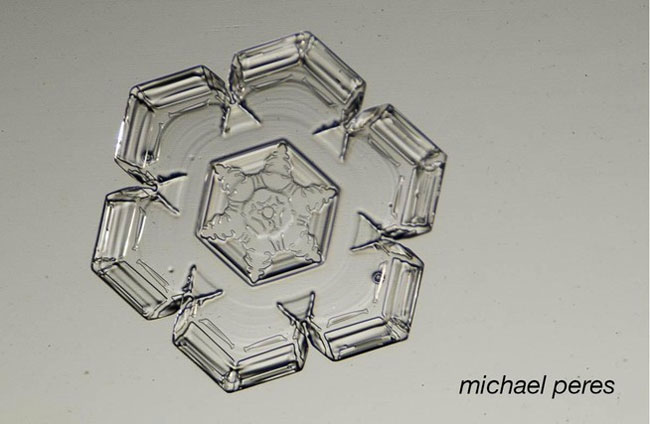According to my phone, it’s -6 outside and it feels like -27. (Or I suppose it would if I went out, but I’m not going out.) So I thought it would be a perfect time to talk about photographing snowflakes.

In addition to being a professor of biomedical photographic communications at the Rochester Institute of Technology in New York, Michael Peres is an award-winning photo-educator, author, and science photographer. One of his students got him interested in snow photography during the winter of 2003–2004 after visiting an exhibition of Wilson Snowflake Bentley photographs at the Buffalo Museum and Science Center. Since Rochester averages about 105 inches of snow per season, he has plenty of chances to perfect his technique. In an interview with EarthSky, he described his approach —
“My methods and equipment are focused towards photographing crystals that are 1 to 2 millimeters in size and are dendritic [“tree-like”]. All snowflakes start out as water molecules that form hexagons in the right conditions. These embryonic crystals are called stellar plates. They can be infinitely small, but they grow and add water molecules over time. At some time during their formation, they grow wings and other intricate structures. When this happens they become dendritic flakes. They are my favorite crystals to photograph. It has been my experience that I have the best luck when the air temperatures are between 15 and 25 degrees Fahrenheit (about -10 to -5 degrees Celsius). ”
To get all the technical details and see more pictures, read the entire interview at https://earthsky.org/earth/michael-peres-on-how-to-photograph-snowflakes?.
Although personally, I’m going to stay inside.
